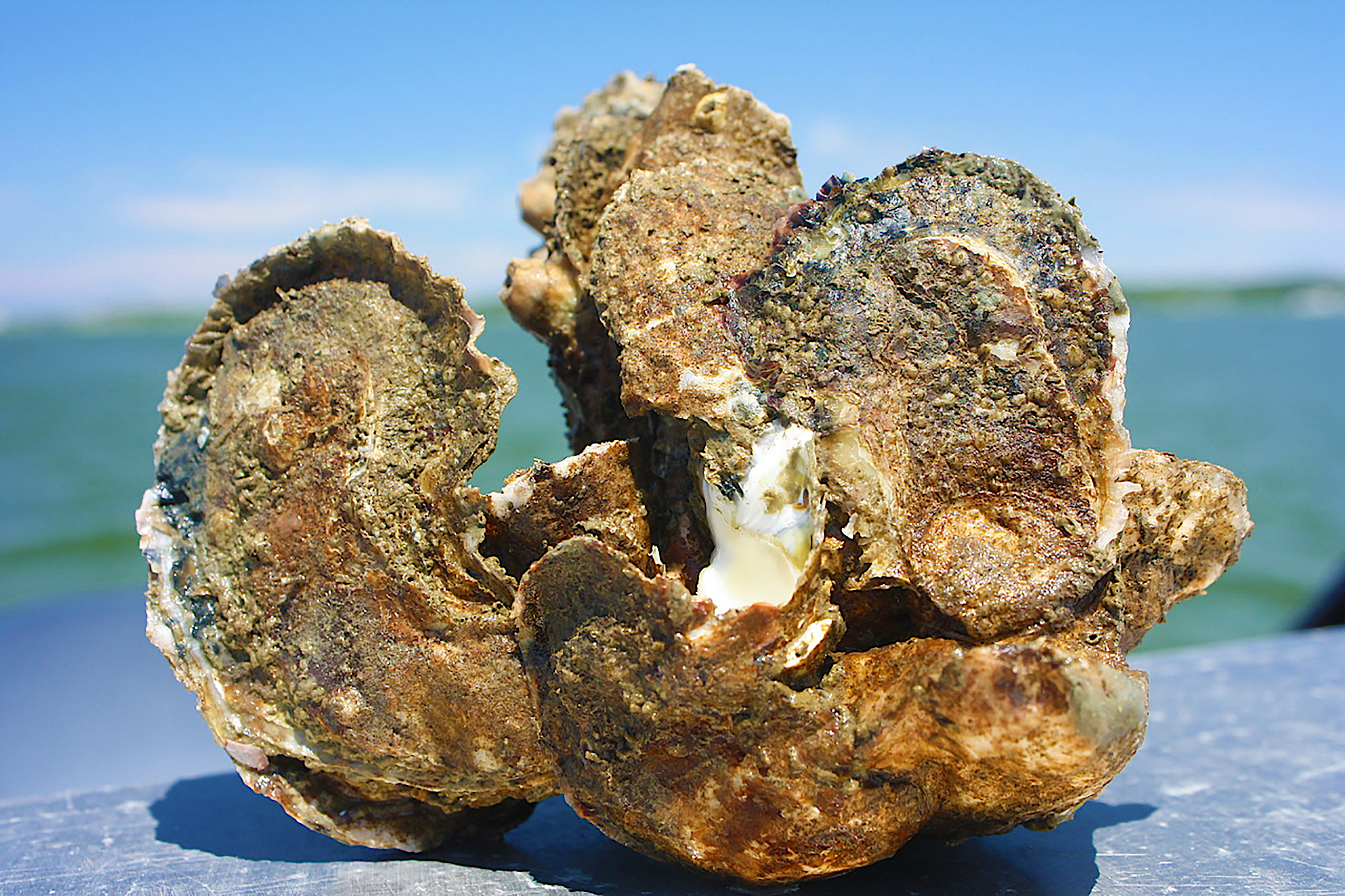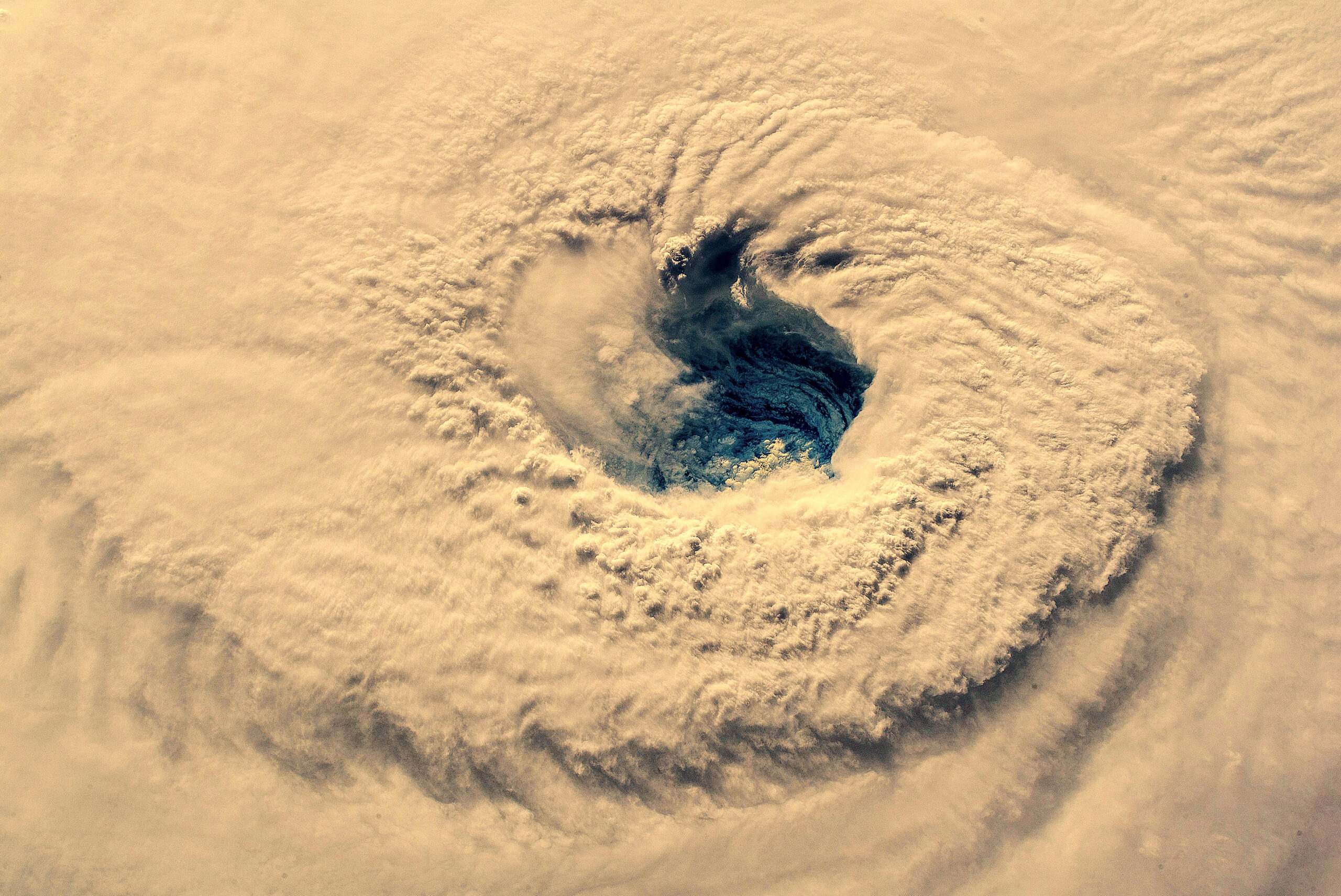Can the right recipe make seafood part of a great holiday meal?

Yes, it can.
Traditional holiday meals for many Americans include turkey, ham, or roast beef as the prime source of protein; however, people also want more variety in their food choices and novel culinary options to consider when making meals at home. If you’re one of those folks who want to break with the norm, consider adding seafood to your holiday menu.
Perhaps you’re reluctant to buy seafood because of concerns about undercooking or overcooking it. Many people are, but North Carolina Sea Grant offers guidance for the ambitious home cook.
Mariner’s Menu is an extensive online resource that we update weekly to feature a variety of kitchen-tested seafood recipes. Along with 380 recipes, Mariner’s Menu tells viewers when North Carolina commercial seafood species are seasonally available, how to discern seafood quality at the point of purchase, and how to safely transport, store, and prepare seafood meals at home. It also offers profiles on select commercial species and on the culinary traditions of commercial-fishing families.
The website had a significant update this year, including an initial set of Cooking NC Seafood videos, featuring Chef Ricky Moore of the Saltbox Seafood Joint in Durham, a James Beard award-winner.
The COVID-19 pandemic and resulting lockdowns changed the way food is accessed and prepared in this country. Prior to the pandemic, about three-quarters of the seafood consumed in the U.S. was sold by restaurants. As dine-in establishments closed, many of the nation’s fisheries reported sales slumps as high as 95 percent.
As the wholesale demand for seafood remained depressed throughout 2020, purchases of fresh and frozen seafood at big-box retailers, discount chains, traditional supermarkets, and other food retailers began to rise. The increase in retail purchases showed people were learning to prepare more seafood at home, and, in the process, they were acquiring new cooking skills.
So what’s really preventing us from firing up the stove and bringing seafood to the dinner table? North Carolina seafood buyers have repeatedly told Sea Grant the salient frustration about cooking seafood is “deciding on a recipe.” Recipes offer seafood consumers trusted guidance, especially when cooking with unfamiliar species.
A 2019 study by the Food Marketing Institute concurs. It found that seafood consumers are very active seekers of information, as 32% of the respondents said recipes would encourage them to buy more seafood.
Mariner’s Menu puts a new face on trusted information for home cooks — and provides ready access to more Sea Grant fisheries and aquaculture information for seafood consumers, market managers, educators, and seafood-industry professionals.
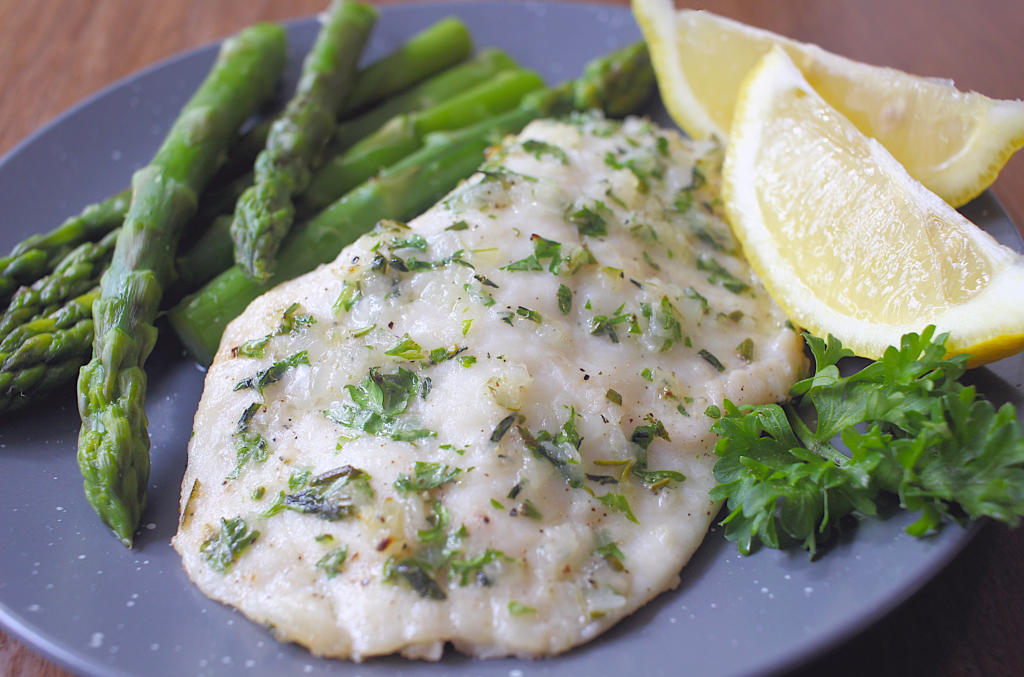
Reel in Your Catch
Seafood, including fish and seafood, is a good source of high-quality protein, nutrients, and omega-3 fatty acids. Eating seafood can help prevent heart disease, and it also may reduce the risk of stroke, depression, and other chronic diseases.
The U.S. Food & Drug Administration recommends that the general public eat at least 8 ounces of seafood per week based on a 2000 calorie diet.
The good news is Americans are eating more seafood. According to the National Fisheries Institute, a seafood-trade organization, Americans consumed a record 20.5 pounds of seafood on average in 2021, a sizeable increase of 1.5 pounds from the year prior. This shows people’s preference for seafood is rising with the help of fresh and frozen products — and recipes to guide them in preparing mouth-watering home meals.
If you like to shop locally, seafood can be a great choice. North Carolina fishers supply a wide variety of seafood choices the year-round, although not every species is available at all times. Consult Sea Grant’s availability charts by region or by season to learn what you currently might find in the market from our coastal waters.
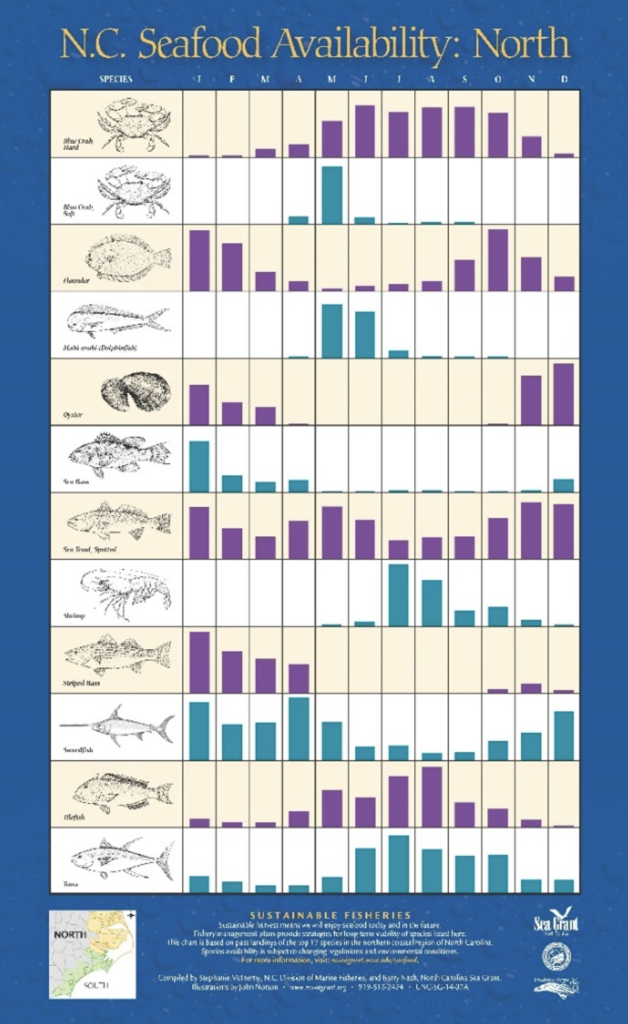
When selecting seafood, quality counts. According to Mariner’s Menu, the shelf life of seafood depends primarily on three factors: the species, where and when it was landed, and how well it was handled before purchase. Know what to look for — and what to avoid — with this simple chart.
It’s also important to follow simple precautions once home to ensure the safety of all who dine on your carefully chosen catch.
From Sea to Table
Whether you’re looking to get creative or just get going in the kitchen, Mariner’s Menu has the answer. Its tried-and-true recipes cover the traditional species and dishes, and it offers new, delicious ideas and possible substitutions. Some unexpected dishes, like lionfish, come from Sea Grant’s work with local fishers to develop new markets for underutilized species.
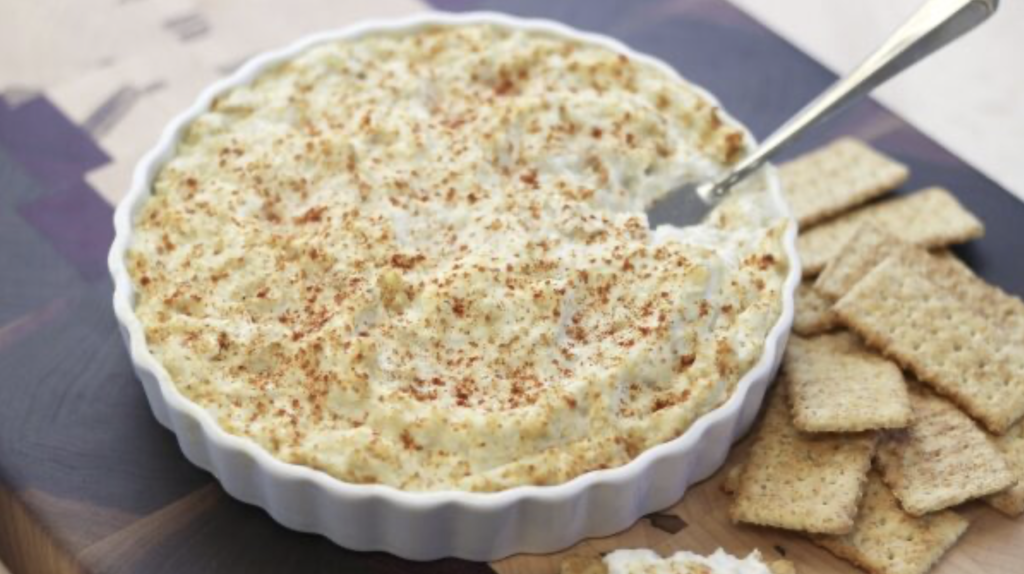
Here are some holiday preparations we think you and family might enjoy:
Hot Crab Dip is the perfect preparation that maintains the sweet, briny flavor of Atlantic blue crabmeat.
Classic Oyster Dressing (lead photo) is a traditional favorite in North Carolina fishing communities.
Deep-fried Coconut Shrimp with Orange-Pineapple Dipping Sauce is a new addition to the Mariner’s Menu library of kitchen-tested recipes.
And don’t forget Baked Spotted Trout with Bacon Stuffing.
BY J. BARRY NASH.
Lead photograph: Classic Oyster Dressing. Credit: Vanda Lewis.
The text from Hook, Line & Science is available to reprint and republish at no cost, but only in its entirety and with this attribution: Hook, Line & Science, courtesy of Scott Baker and Sara Mirabilio, North Carolina Sea Grant.
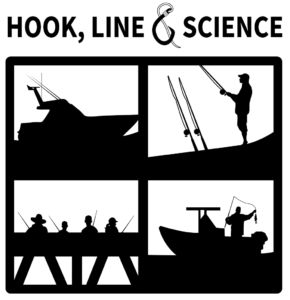
- Categories:


